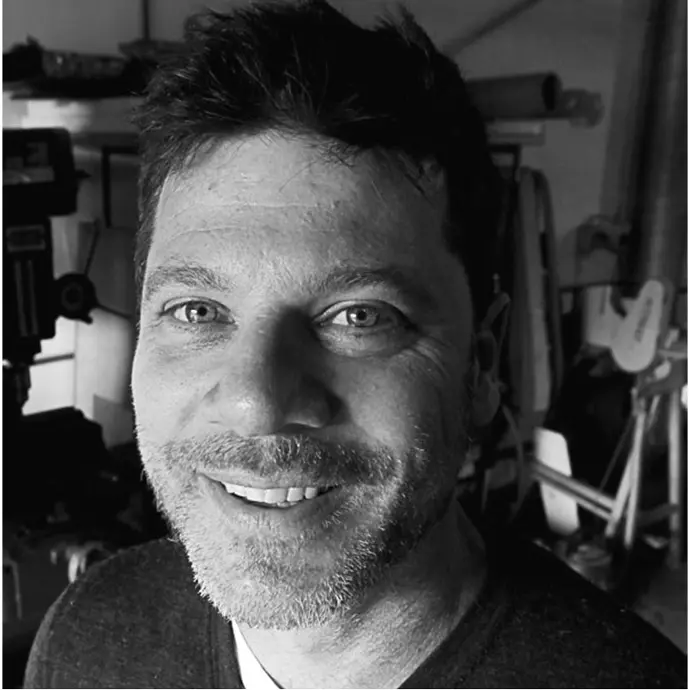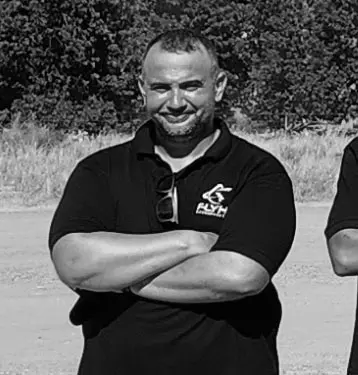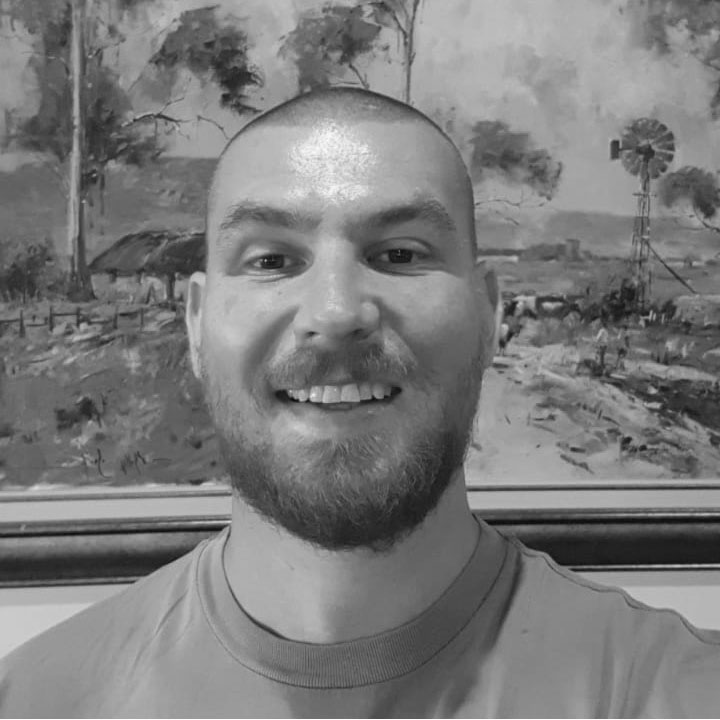ABOUT US
Founding and Purpose
Greenfly Aviation was founded in 2016, born from a critical need to innovate within the agricultural sector, especially in addressing the pressing challenges faced by the citrus industry in 2015 and 2016.
The industry was teetering on the brink of collapse due to the rampant spread of pests, notably the False Codling Moth (FCM), which threatened the livelihoods of countless farmers and the broader agricultural economy. Traditional pest control methods, relying heavily on manned aircraft, posed significant risks.
Physical danger to pilots navigating fixed-wing aircraft for pesticide dispersal became increasingly untenable. The incidents, accidents, and near-misses highlighted an urgent need for a safer, more sustainable alternative.

This backdrop set the stage for a collaboration between X-SIT and FlyH2 Aerospace, aiming to leverage UAV technology for the Sterile Insect Technique (SIT). The goal was to develop a UAV solution that could safely and efficiently release sterile insects as a biocontrol measure against the False Codling Moth. A key advantage of using UAVs for SIT is their ability to release sterile insects during optimal conditions — cooler temperatures, less turbulence, and reduced wind at night — significantly improving the survival rate of released insects and their effectiveness in pest control. These conditions also ensure the sterile insects are less vulnerable to natural predators, such as birds, further enhancing the success of the SIT program.
With the development of Dragonfly V and our advanced hopper technology, Greenfly Aviation has now made these night-time SIT releases possible. Our UAVs are equipped to navigate and operate safely in the dark, thanks to our acquisition of Beyond Visual Line of Sight (B-VLOS) and night operation privileges. This new capability will set a new standard in agricultural pest control, emphasising safety, efficiency, and environmental sustainability.

Operational Certification
In 2019, Greenfly Aviation obtained the RPAS Operator's Certificate (now known as an Unmanned Aircraft System Operator Certificate or UASOC). This certification allows us to conduct legal UAV operations across South Africa including Sterile Insect Technique (SIT) operations, environmental conservation efforts, and projects aimed at improving agricultural efficiency.
The process to secure this certification in South Africa is rigorous, reflecting the complex regulatory framework governing drone operations. However, the thoroughness of this process means that, once certified, operators like Greenfly gain substantial operational privileges.
Unlike in many other jurisdictions, our certification permits us to fly drones that weigh over 25kg, undertake flights up to 5km beyond the visual line of sight (B-VLOS), perform night operations, and operate at altitudes up to 1000ft, covering expanses as large as 7854ha. We can perform these operations at our own discretion without requiring additional permission.
Furthermore, our UASOC allows for the potential extension of B-VLOS ranges for specific operations, provided local environmental and airspace considerations are met. This aspect of the regulatory framework positions South Africa—and by extension, Greenfly Aviation—as leaders in UAV operation within the African continent. Many African countries recognise South African UASOCs, airworthiness certificates, and pilot licences, highlighting the potential for Greenfly Aviation's operations to expand beyond South African borders.
Partnership Evolution
In 2016, X-SIT and FlyH2 established Greenfly Aviation as a Special Purpose Vehicle (SPV) to deploy UAV technology in agricultural and environmental applications. By 2022, X-SIT decided to sell its shares in Greenfly to Boland Risk Solutions (BRS), focusing on its core business of breeding and sterilising fruit codling moths (FCM). This sale not only enabled X-SIT to grant Greenfly the first right of refusal for aerial services in its orchards but also allowed Greenfly to bolster its capital for future growth.
BRS, with its deep expertise in rural farm security and keen interest in integrating UAV technology, was an ideal partner for this transition. The partnership with BRS expanded Greenfly’s operational scope to include security services, providing access to BRS's extensive resources and market reach, which includes over 200 farms and five municipalities. This strategic alignment positioned Greenfly for greater influence within its primary agricultural sector.
Technology and Collaboration
Greenfly Aviation's collaboration with Cybicom Atlas Defence and Earth Drones represents a strategic consolidation of expertise aimed at addressing critical environmental challenges.
By partnering with Cybicom Atlas Defence, Greenfly Aviation leverages advanced military-grade technology and engineering prowess to enhance the development of hopper technology for biocontrol missions.
The alliance with Earth Drones further amplifies Greenfly Aviation's operational capacity, incorporating cutting-edge drone technology specialised in environmental surveillance and treatment applications.
Earth Drones contributes its deep understanding of drone-based environmental monitoring and precision application techniques, making a significant impact on combating Invasive Alien Plants (IAPs).

These IAPs pose a severe threat to South Africa's water catchment areas, and the collaboration aims to mitigate this risk through innovative technological interventions.
Together, these partnerships reflect Greenfly Aviation's dedication to innovation, sustainability, and the utilisation of technology in preserving natural resources. By combining the strengths of each partner, Greenfly Aviation is positioned at the forefront of environmental conservation efforts, demonstrating a collaborative approach to solving complex ecological issues.
Operational Capabilities and Services
In South Africa, the battle against Invasive Alien Plants (IAPs) is critical for the country's water security and the protection of its unique biodiversity. IAPs pose a significant risk, with studies by the CSIR indicating that these species can consume up to 30% of South Africa's freshwater resources. This issue is particularly acute considering that only 5% of the country's land mass supplies half of its freshwater.
The threat became starkly apparent in 2018 when Cape Town faced "Day Zero" — the point at which the city's water supply was nearly depleted. This crisis highlighted the need for aggressive management of IAPs to secure the water supply. In response, Cape Town invested R400 million in projects to map, understand, and control the spread of IAPs in critical water catchment areas.
Greenfly Aviation's role in this effort leverages the power of UAV technology for detailed mapping and regular surveillance of these invasive species. Our UAVs provide a cost-effective solution for monitoring the extent of IAPs, evaluating the effectiveness of eradication programs, and planning further interventions.
Beyond water consumption, IAPs, including invasive pine species, contribute to increased biomass, which elevates fire risks. The Cape region, known for its fynbos ecosystem, experiences frequent wildfires that threaten both natural and urban environments. Utilising UAVs, Greenfly Aviation employs LIDAR to assess biomass and multispectral imaging to identify invasive species. This technology allows for precise mapping of invasive densities and an understanding of the landscape, which is crucial for effective clearing operations planning.
Through the application of UAV technology in environmental conservation, Greenfly Aviation plays a pivotal role in preserving South Africa's water resources and natural landscapes. Our work is poised to utilize advanced technology in addressing environmental challenges, , ensuring the sustainability of vital water supplies, and protecting communities from the increasing dangers of wildfires.
In the realm of Earth Science and carbon sequestration studies, UAVs emerge as pivotal tools for enhancing our understanding and management of natural ecosystems. Our UAV operations have the potential to play a critical role in validating carbon credits and assessing the carbon capture capabilities across diverse landscapes. By precisely measuring biomass and identifying carbon sinks, our drones facilitate detailed evaluations of ecosystems' roles in carbon sequestration, providing actionable data for climate change mitigation efforts.
One of the significant advantages of using UAVs in these studies is their ability to augment satellite data. While satellites offer wide-area coverage and historical data crucial for long-term climate monitoring, UAVs excel in delivering high-resolution, localised insights. They fly at lower altitudes, allowing for imagery and data collection with better spectral resolution and less atmospheric interference. This capability is particularly beneficial in densely vegetated or complex terrains where satellite data may not provide the necessary detail for accurate assessments.
Furthermore, our UAVs may be equipped with advanced sensors capable of capturing a wide range of data, from multispectral imagery to LIDAR scans. These technologies enable us to assess fire risks by mapping biomass accumulation and identifying vulnerable areas to wildfire outbreaks. Such detailed spatial data aids in developing targeted management practices for reducing fire risks and enhancing ecosystem resilience against changing climate conditions.
Our work also supports critical environmental management practices, such as deforestation and reforestation efforts. By monitoring changes in land use and vegetation cover, UAVs help track deforestation rates and assess reforestation projects' success. This monitoring is essential for ensuring sustainable forestry management practices that align with global carbon reduction goals.
Greenfly Aviation leverages wide-area UAV surveys in yield forecasting, a process that has the potential to be immensely beneficial to small-scale farmers across Africa. Our UAV technology enables us to provide comprehensive insights into area-wide agricultural performance and the impacts of climate variability on crops. This data is instrumental in supporting agricultural programs aimed at boosting farm productivity and ensuring food security, by leveraging precise, actionable data to forecast and optimise crop yields.
A significant advantage of our approach lies in the use of UAV footage as training data for machine learning algorithms. By integrating high-resolution drone imagery, we can refine the accuracy of algorithms designed to interpret satellite data, making it more applicable and beneficial to subsistence farmers. This synergy between drone and satellite data offers a cost-effective, scalable solution for delivering critical insights to farmers, enabling them to make informed decisions about planting, irrigation, and harvesting.
By providing such tailored agricultural insights, we empower small-scale farmers to increase their yields and profitability, directly contributing to the sustainability of their communities. This technology-driven approach not only enhances the operational effectiveness of agricultural practices but also promotes resilience against the challenges posed by changing climate conditions. Through precise yield forecasting, Greenfly Aviation is helping to pave the way for a future where technology plays a central role in sustaining agriculture and food security in Africa and beyond, ensuring that small-scale farmers have the tools and information they need to thrive.
Releasing FCM using the Dragonfly V represents a pivotal shift from traditional manned aircraft applications. This change not only enhances the safety of operations by eliminating pilot risk but also significantly reduces operational costs. Our technology ensures a higher quality of release, thanks to a non-mechanical method that preserves the integrity of the insects. Additionally, our nighttime releases increase survival rates by minimising exposure to predators, further supported by the UAV's silent operation that ensures farm activities remain undisturbed. The precision of our GPS-logged releases assures farmers of the program's efficacy.
Beyond FCM, Dragonfly V's application extends to a broad spectrum of biocontrol missions with profound implications for both human welfare and environmental conservation:
- In South Africa, the challenge of IAPs is monumental, threatening biodiversity, water resources, and agriculture. Biological controls like the release of specific weevils and gall wasps have emerged as effective countermeasures. Dragonfly V's capability to distribute these biocontrols with precision heralds a new era in combating IAPs.
- Aphid control through Aphidiidae wasps introduces a natural predator into the ecosystem, offering an eco-friendly solution to agricultural pests that compromise crop health and biodiversity.
- Fruit fly management in Southern African agriculture leverages SIT, a critical strategy replicated in various global contexts to mitigate substantial economic losses.
- Kenya's "Drones Against Tsetse" project exemplifies the innovative use of UAVs in controlling tsetse fly populations, addressing the spread of trypanosomosis. Dragonfly V's long endurance and specialised hopper technologies are ideally suited for such initiatives.
- Collaborations with entities like the Gates Foundation highlight the potential of using Dragonfly V for mosquito control projects across Africa, aiming to curb the transmission of diseases like malaria and dengue. However, the ecological implications of these interventions, such as impacts on bat populations and pollination, necessitate thorough assessment before launch.
The development of our patentable hopper system, leveraging a Venturi effect for insect distribution, represents a groundbreaking approach to biocontrol. Approved for nighttime operations, we maximise mission success by utilising cooler temperatures and reduced predator activity.
Although initially devised for FCM in South Africa, our hopper's versatility positions us for international markets, addressing global challenges like the codling moth in key agricultural regions. This not only opens substantial export opportunities but also underscores our commitment to agricultural sustainability through innovative UAV technology.
Greenfly Aviation is acutely aware of the multifaceted threats facing farmers and their livelihoods, ranging from personal safety concerns to the theft of critical farm equipment and significant portions of their harvests. In response, we've developed a comprehensive UAV-based surveillance and monitoring service tailored specifically for farm security needs, with an emphasis on nighttime operations. Our drones, outfitted with state-of-the-art sensors, play a pivotal role in detecting unauthorised activities and safeguarding assets when the risk is highest.
Farm theft not only jeopardises the farmers' safety but also undermines the farm's operational integrity by the loss of essential machinery, pumps, and batteries, alongside the direct theft of up to 30% of harvests under the cover of darkness. This rampant theft poses a significant threat to the agricultural sector's contribution to food security in South Africa.
In tackling these challenges, Greenfly Aviation collaborates closely with Boland Risk Solutions (BRS) and local municipalities to delve into the root causes of these security breaches. By integrating UAV technology into their broad security framework, BRS not only enhances their capacity to monitor vast agricultural lands effectively but also helps in devising solutions that address both the symptoms and sources of rural crime.
Our partnership extends beyond surveillance; we are actively involved in facilitating discussions between farmers and local communities. Recognizing the intricate balance between securing farmers' yields and addressing community needs, BRS negotiates access to surplus harvests for impoverished communities, ensuring that while the supply meets the demand, the overarching goal of national food security is not compromised.
Greenfly Aviation's involvement in wildlife conservation is driven by the need to protect ecosystems and support the tourism sector critical to South Africa. Our use of the Dragonfly V UAV, an electrically powered vehicle, allows us to conduct surveillance and monitoring with minimal disturbance to the natural environment, preserving the quiet of the wilderness.
We're pioneering a project that employs Synthetic Aperture Radar (SAR) to pinpoint snares and gin traps set by poachers. These traps threaten the survival of endangered species, particularly big cats, and compromise the security of conservation areas. Dragonfly V's silent flights will enable us to gather data without disrupting animal behaviour or the park's peace.
This SAR project is more than just an innovation in conservation technology; it's a tool for park rangers to efficiently locate and dismantle deadly traps, safeguarding wildlife. Additionally, it helps secure protected areas that are vital to the country's tourism, which thrives on visitors experiencing South Africa's untouched natural beauty and diverse wildlife.
Integrating UAVs like Dragonfly V into our conservation strategies underscores our commitment to not only preserving South Africa's biodiversity but also ensuring the long-term viability of its tourism industry, all while keeping our operations as non-intrusive as possible.
Future Directions and Opportunities
Greenfly Aviation plans to grow our service offerings and geographic presence. Working with Ross Air, we aim to tackle larger-scale Invasive Alien Plant (IAP) missions and expand our use of UAVs for biocontrol projects, like mosquito releases to combat malaria. Our collaboration has developed precise hopper technology, crucial for these efforts.
We’re looking to broaden our fleet and extend operations beyond the Western Cape, aiming for nationwide coverage. By teaming up with aviation services like Ross Air, we aim to supplement their existing operations, leveraging our UAV capabilities for environmental and agricultural benefit.
Further development of our hopper technology is also on our agenda. We're exploring its use for a range of biocontrols targeting diseases like malaria and sleeping sickness, intending to improve health outcomes and agricultural productivity.
In short, Greenfly Aviation is focused on scaling operations, fostering partnerships, and innovating UAV applications for environmental and health advancements.

Mission Statement
To leverage innovative UAV technology for sustainable agricultural practices, environmental conservation, and community safety, aiming to enhance food security, protect natural ecosystems, and support rural and agricultural communities with cost-effective, efficient, and safe aerial solutions.
Vision Statement
Our vision is to lead in leveraging UAV technology for environmental and agricultural sustainability across Africa. We envision a future where drones are integral in preserving biodiversity, enhancing food security, and protecting rural areas. By innovating and expanding our services, we aim to make advanced aerial solutions widely accessible, driving a global transition towards sustainable and technologically enhanced methods to address critical challenges.
Meet our Team!

Mark van Wyk
Founder, Programmer, Aviator
Mark van Wyk is a highly technical entrepreneur with 35 years of software development experience. He is an expert on hydrogen fuel cells and is an aviation enthusiast.
He holds a drone pilot's license, a private pilot's license (aeroplane), and a hang glider pilot's license and also has significant hours on microlights, sailplanes, and helicopters.
Mark is also an RC pilot and electronics hobbyist.
LinkedIn: https://www.linkedin.com/in/markvwyk/

Onno Huyser
Founder, MSc, Entrepreneur
Onno Huyser has a double degree in zoology and conservation biology and served as program director for WWF.
He brings his extensive knowledge in environmental management, conservation, and agriculture to Greenfly.

Kurt MacKrill
Pilot
Kurt Mackrill is a highly skilled and experienced drone pilot with over 17.5k hours on everything from hobby to military spec drones.
He operates nationally and internationally and brings this highly sought-after skill set and knowledge to the GFA team.

David Rogers
Pilot
David Rogers is a UAV pilot and has experience flying Ag Drones in mountainous terrain.
He is a qualified Pest Control Operator (PCO) specialising in Aerial Application. Previously David gained 10 years’ experience in Corporate South Africa.
David's versatile skill set and hands-on experience contribute significantly to Greenfly Aviation's innovative solutions
Join us in our mission to protect South Africa's agricultural and natural landscapes.
Contact Greenfly Aviation to learn how our advanced capabilities can support your environmental management and security needs.